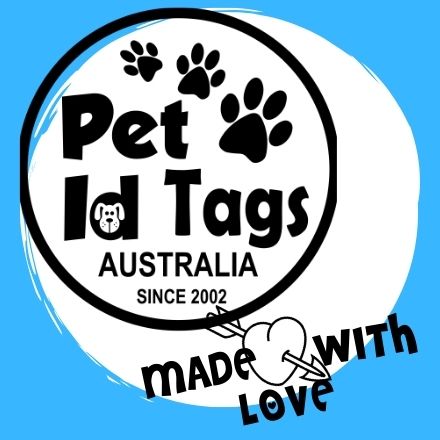If your dog or cat ran out the gate this morning, how long would it take for someone to return them?
It’s a question no one wants to face, but it matters. The moment a pet goes missing, every second counts. A visible ID tag or a registered microchip can mean the difference between a quick reunion and weeks of heartache.
Many owners pick one and skip the other. But the truth is, ID tags and microchips work best together. Both microchipping and pet ID tags have pros and cons, but it’s always better to have redundancy. If you want the best shot at getting your pet home safely, you need both.
Pet ID Tags Are Your First Line of Defence
While a microchip needs a scanner, an ID tag needs only human eyesight.
A simple tag with your pet’s name and your phone number can save time, stress, and a trip to the vet. If a neighbour spots your dog trotting down the street, they can call you straight away - no need to wait for a microchip scan. And with Pet ID Tags Australia’s ultra-clear laser-engraving and durable materials, there’s next to no chance of the info being unreadable.
In fact, most vets and local councils recommend having both: a registered microchip and a visible tag.
Tags also speak for pets who can't. A stranger won’t know your dog’s name, health needs, or that they’re timid around people. A custom tag helps your pet get kind treatment until you're reunited.
Microchipping: The Permanent Backup Plan
A microchip is a small, rice-sized device inserted just under your pet’s skin. It holds a unique ID number that matches your contact information in a national registry. Most Australian states require dogs and cats to be microchipped, but even without that requirement it’s a good idea to have it done. If your pet ends up at a vet or shelter, they’ll scan the chip and reach out to you.
While it may sound foolproof, it’s not perfect. Many pets aren’t scanned right away. Some microchip databases aren’t up to date. In rare cases, the microchip can become unreadable due to migrating from its original location. A microchip will generally work, but it takes a bit more effort. And when your pet is lost, you want to make it as easy as possible for their rescuer to find you.
Why You Should Always Use Both
Think of a microchip and ID tag as a team. One gives instant access. The other gives permanent proof. Together, they double your odds of getting your pet back. With both systems working together, your pet has a safety net from the moment they go missing to the second they reach professional help.
How to Keep Your Pet’s Details Up to Date
Microchips and tags only work if the information they carry is current.
-
For microchips: Contact your microchip registry when you move house, change phone numbers, or rehome your pet. Most registries let you update your details online in minutes.
-
For tags: Make sure your tag shows your best contact number. If you change phones or move, swap it out. Many pet owners also add a second number—like a partner’s or neighbour’s—for extra coverage.
A pet’s tag should be easy to read, securely attached, and not too worn. If it gets scratched or worn, it’s always better to replace it with a new one. Keeping your pet’s identification current and easily accessible is one of the simplest ways to prevent a lost pet from becoming a missing one.
Choosing the Right ID Tag
A good ID tag should be simple, secure, and visible. Here’s what to consider:
-
Material matters: Choose stainless steel or durable aluminium to withstand rain, mud, and rough play.
-
Engraving vs printing: Laser engraving lasts longer than printed ink, which can fade or scratch off.
-
Size and weight: Match the tag size to your pet. A Great Dane can carry a large disc, but a Chihuahua needs something light and compact.
-
Essential info: Include your name, mobile number, and pet’s name. Some owners add “microchipped” to alert anyone who finds them.
Many owners are now opting to use Smart Pet Tags with a QR code that links to a digital profile. These can hold more information—like vet contacts, allergies, and multiple phone numbers. With the Pawzee Smart Pet Tag sold in our shop, you’ll receive an email notification with the tag's estimated location, and the finder will be able to reach out to you directly.
Why Both Forms of ID Matter
Relying on just one form of identification leaves a gap in your pet’s safety net. Microchips offer a permanent backup, but they require someone with a scanner. Pet ID tags give instant access to your contact details, but they can fall off or break. Together, they form a complete system. Bonus points if you get your collar from a reputable pet shop
Think of it this way: if your pet gets out of the house and someone finds them walking down the street, an ID tag gets them home before dinner. If your pet ends up at the vet or council shelter, the microchip steps in. One protects in the moment. The other protects in the long run.
For peace of mind, use both. It’s a simple move that gives your pet the best chance of coming home safe—whether they're ten steps away or ten suburbs over.



